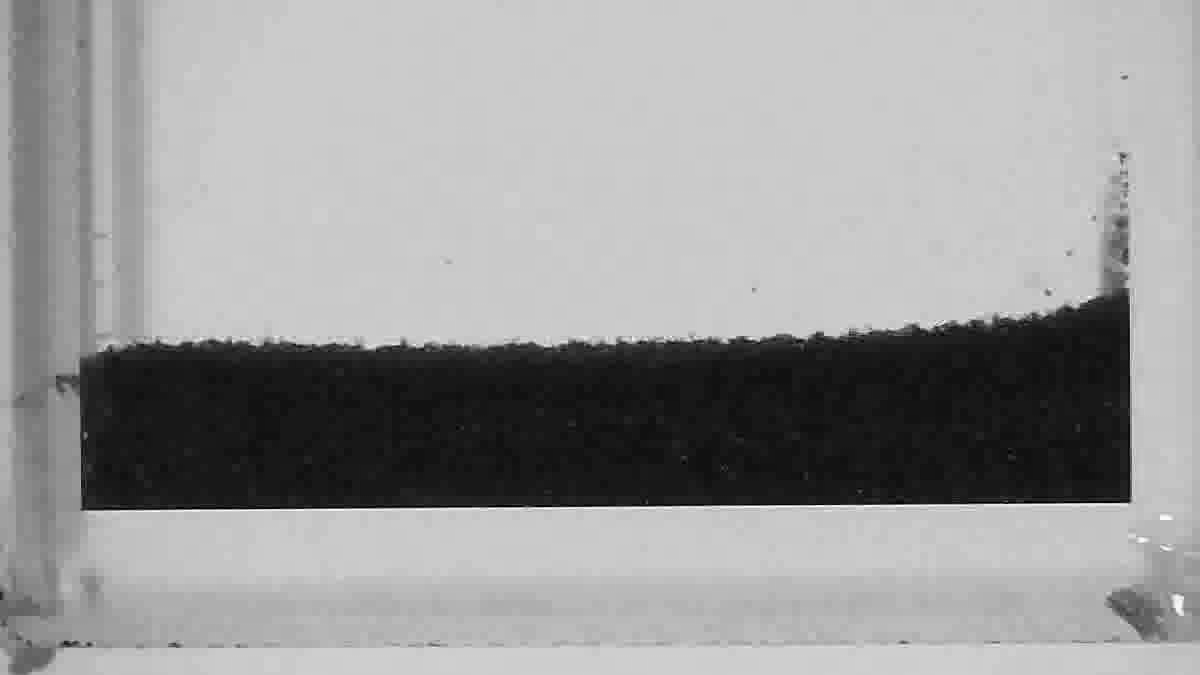From an hourglass to the dunes on a beach, we know that sand flows downhill. It’s just what granular materials do. However, researchers have just discovered that it is possible to create a granular material that ignores this basic principle: A sand-like substance that flows uphill and climbs stairs and walls.
The discovery was serendipitous. Lead author Dr Samuel Wilson-Whitford saw the peculiar movements when he rotated a magnet beneath a vial of polymer particles coated in iron oxide. Without the magnet they moved like any sand-like medium, behaving as the granular flow equations would expect. But the magnetic field switched things around.
“After using equations that describe the flow of granular materials,” co-author Professor James Gilchrist, from Lehigh University, said in a statement. “We were able to conclusively show that these particles were indeed moving like a granular material, except they were flowing uphill.”

The material flowing uphill
Image Credit: Laboratory for Particle Mixing and Self-Organization, Lehigh University
To explain the motion, the team had to make some unique changes to the granular flow equations. The angle of repose, the steepest angle of descent that can be created in the material without it slumping, had to be negative. The friction coefficient also had to be negative.
“Up until now, no one would have used these terms,” Gilchrist added. “They didn’t exist. But to understand how these grains are flowing uphill, we calculated what the stresses are that cause them to move in that direction. If you have a negative angle of repose, then you must have cohesion to give a negative coefficient of friction. These granular flow equations were never derived to consider these things, but after calculating it, what came out is an apparent coefficient of friction that is negative.”
The magnetic field is the cause of the counterintuitive movement of these so-called microrollers. It creates a torque so the particles start rotating, and it produces cohesion so the particles stick together for a little bit. A stronger magnetic field increases the cohesion, giving them more traction so they can go uphill even faster. That’s how they made them climb tiny staircases.
“This first paper just focuses on how the material flows uphill, but our next several papers will look at applications, and part of that exploration is answering the question, can these microrollers climb obstacles? And the answer is yes,” Gilchrist said.
“We’re studying these particles to death,” he says, “experimenting with different rotation rates, and different amounts of magnetic force to better understand their collective motion. I basically know the titles of the next 14 papers we’re going to publish.”
The work is published in the journal Nature Communications.
Source Link: Sand That Flows Uphill Created By Researchers